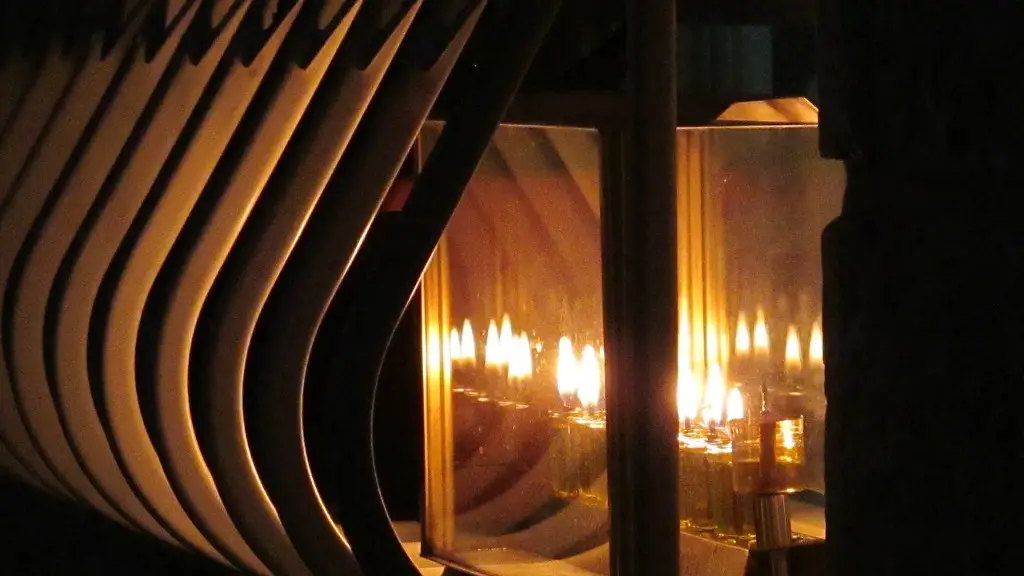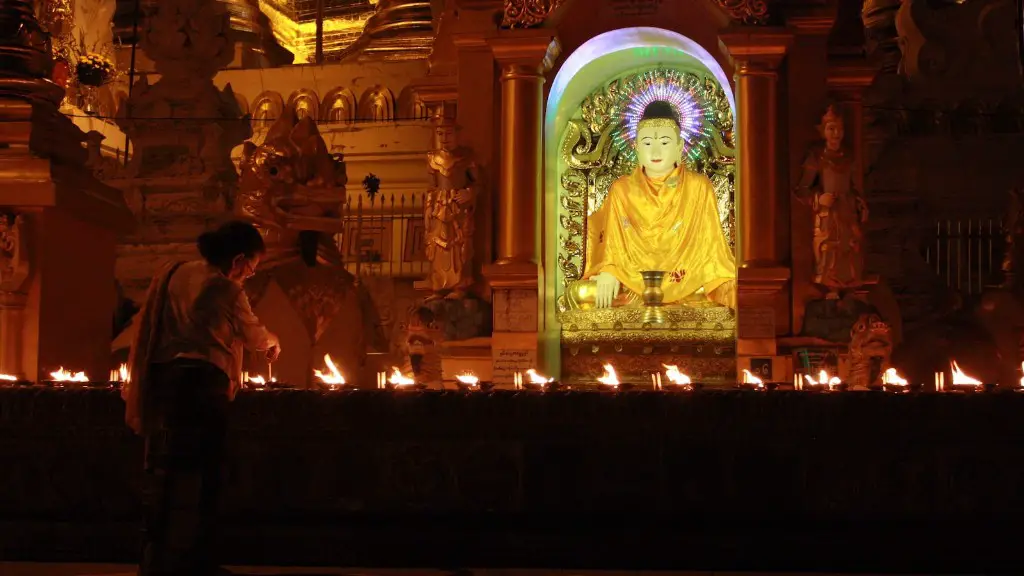Hinduism is one of the oldest and most complex religions in the world. Its origins date back thousands of years, and it is an integral part of many cultures. The religion has many symbols, including the ‘Om’ symbol, the lotus flower, the Svastik symbol, and the Trishul or trident. All of these symbols have different meanings and are associated with different gods and goddesses.One of the most important Hindu symbols is the ‘Om’ symbol.
This symbol is composed of three Sanskrit letters, ‘Aum,’ and it is generally thought to represent the all–pervading divine energy, or consciousness, and the four states of being in the universe – waking, dreaming, deep sleep, and beyond. It is also said to symbolize the unity between the body, mind and spirit. This symbol is often used in meditation and prayer and is believed to bring harmony and peace.
The lotus flower is another widely-recognized Hindu symbol. It is believed to represent spiritual enlightenment and purity, as well as creativity and beauty. It is also said to represent the auspiciousness that is associated with the god Shiva. The lotus symbolizes the divine, as it is said to have grown from the mud and bloomed into a beautiful flower.
The Svastik symbol is considered one of the most important symbols in Hinduism. It is composed of four arms that represent the four Vedas and the four castes of Hindu society. The symbol is said to represent growth and prosperity and is often used to invoke the gods into rituals and ceremonies.
The Trishul or trident is also an important symbol in Hinduism. It represents the trinity of Brahma, Vishnu, and Shiva and is said to be associated with fire, power, and destruction. The trident is also seen as a symbol of protection and is often used as a weapon against evil.
These symbols represent the many gods and goddesses in Hinduism and are associated with different aspects of the religion. They are seen as symbols of strength, beauty and power and are used to invoke the gods in rituals and ceremonies. It is important to understand the various symbols and their meanings, as they offer insight into the beliefs and values of Hinduism.
What Are the Main Deities in Hinduism?
Hinduism has several major deities, each associated with different aspects of life. The most important Hindu gods are Brahma, Vishnu, and Shiva. Brahma is often seen as the Creator, Vishnu is the Preserver, and Shiva the Destroyer.These gods have various stories and legends associated with them, and they are each associated with different aspects of life and the universe.
Mahavishnu is one of the most important forms of Vishnu and is said to be the Supreme Lord. He is often portrayed with four arms, carrying a conch shell, mace, disc, and lotus flower. It is believed that he is the one who preserves cosmos and material existence, and his mythical depictions often include him stationing two other beings, Shesha and Garuda, representing his material and spiritual aspects.
Shiva is traditionally considered to be the destroyer and is perhaps the most popular god in Hinduism. He is often depicted with long hair, a cobra necklace, a trident, and a third eye. He is said to be the destroyer of ignorance and ego, as well as the cause of regeneration or renewal in the universe.
Brahma is the god of creation, but he is not as widely praised as the other two gods, Vishnu and Shiva. He is usually depicted with four heads, four hands, and four legs. He is often associated with the four Vedas, the creative aspect of the universe, and the progress of humankind. He is also known as the “God of Knowledge” and is believed to be the one who created the universe.
How Is Hinduism Practiced?
Hinduism is a complex religion, and it is practiced in many different ways. Generally speaking, Hinduism is a religion that encourages adherents to practice compassion, generosity, and honesty. It is also a religion of devotion and includes religious rituals such as puja and yajna, as well as chanting mantras, meditating, and worshipping the gods and goddesses.
Hindus also practice yoga and austerities in order to achieve physical, mental, and spiritual balance. Additionally, Hindus often practice ancestor veneration and honor the deceased with rituals such as offering food to the dead. Finally, Hindus practice a spiritual lifestyle which includes meditation, yoga, and ethical living as a path towards enlightenment.
Hinduism is further divided into four major denominations known as Vaishnavism, Shaivism, Shaktism and Smartism. Each of these faiths has its own beliefs and practices although there are many elements of overlap.Vaishnavism is the worship of Vishnu or Vishnu’s avatar and the practice of bhakti yoga. Shaivism is the worship of Shiva, Shaktism is the worship of the feminine divine, and Smartism is the worship of multiple gods and goddesses.
What Are Some Hindu Festivals?
Hindus celebrate a variety of festivals. Many of these festivals have ancient origins and are steeped in tradition and spiritual symbolism. Some of the most important Hindu festivals include Diwali, Holi, Durga Puja, and Raksha Bandhan, among others. Each of these festivals has its own customs, rituals, and traditions.
Diwali is perhaps the most significant Hindu festival and it is celebrated throughout India and other parts of the world. It marks the passage of Lord Rama and his return to Ayodhya after his fourteen-year exile. It is also known as the festival of lights and signifies the victory of knowledge over darkness. Holi is also a popular Hindu festival and is considered the festival of colors and love. This festival marks the onset of the new season and is mainly celebrated in honor of Krishna.
Durga Puja is celebrated throughout India, especially in Bengal. It honors the Goddess Durga and celebrates her battle over the demon king Mahishasura. It is a period of joy and festivities, and devotees perform puja to honor the goddess. Finally, Raksha Bandhan is a festival of brothers and sisters and is celebrated to signify the love and protection between them.
What Is the Significance of Hinduism Symbols?
The symbols of Hinduism have both a spiritual and a cultural significance. They represent the beliefs and values of the religion, and they are often used in religious rites, rituals, and ceremonies. These symbols are also used as part of decorations and religious art, and they are often used to invoke the gods during traditional festivals and celebrations.
The symbols in Hinduism are associated with Buddhist teachings, and they are commonly used in Buddhist as well as Hindu practices. They are seen as ways to express and connect with spirituality, as well as remind people of their spiritual identity and beliefs. The symbols can also be used to ward off evil and bring peace and harmony. By understanding the various symbols of Hinduism, we gain greater insight into the beliefs and values of this complex religion.
What Is the Significance of the ‘Om’ Symbol?
The ‘Om’ symbol is considered one of the most important Hindu symbols, and it holds great significance in the religion. It is composed of three Sanskrit letters and is said to represent the all–pervading divine energy, or consciousness, and the four states of being in the universe. It is also used in meditation and prayer and is said to bring peace and harmony. Additionally, the ‘Om’ symbol is believed to represent the unity between the body, mind, and spirit.
The ‘Om’ symbol is deeply connected to the Vedas and Hindu mythology, and it has been used for centuries in religious ceremonies and rituals. It is considered an auspicious symbol, and it is believed to bring luck and protect from evil and misfortune. Additionally, the ‘Om’ symbol is thought to bring a sense of inner peace and help bring about our highest spiritual potential.
Conclusion
Hinduism is one of the oldest and most complex religions in the world, and it is an integral part of many cultures. It has a variety of symbols associated with it, each imbued with its own spiritual and cultural significance. The ‘Om’ symbol, lotus flower, Svastik symbol, and the Trishul or trident are some of the most widely recognized symbols. These symbols represent the many gods and goddesses in Hinduism and are used in ritual and ceremonies to invoke the gods. Additionally, these symbols are associated with different aspects of the religion and provide an insight into beliefs and values of Hinduism.

